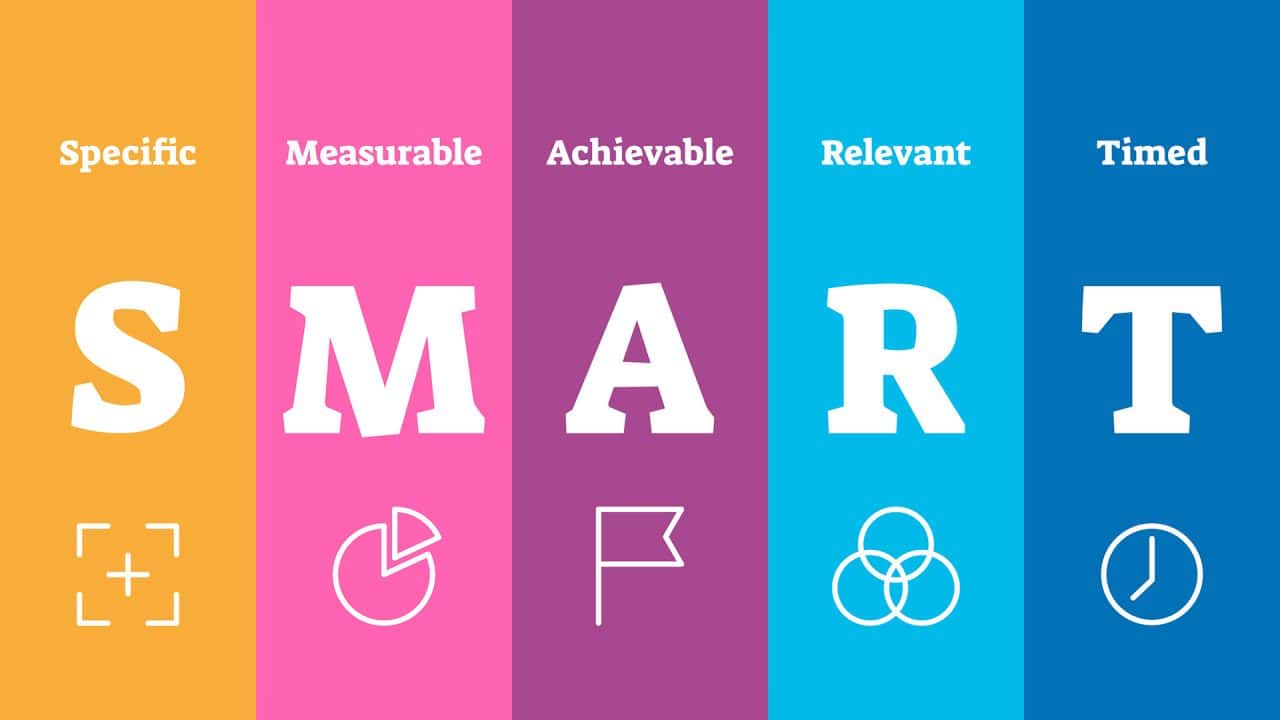
You have undoubtedly heard of SMART goals for life, but what is an example of a SMART goal for a website? This question represents a critical step in your journey toward a thriving online presence. Achieving success in the digital world requires precise planning and purposeful targets, and SMART goals are a method to ensure you’re on the right track.
An example of a SMART goal for a website is to increase organic traffic by 20% over the next six months by implementing targeted SEO strategies, monitoring user engagement, and continuously updating content based on analytics insights.
Key Takeaways
- Your website needs to be built around specific goals that you want to achieve to get direction and coherence.
- A smart goal for a website is specific, measurable, achievable, relevant, and time-bound, designed to improve the site’s performance
- Identifying the target audience, desired outcome and timeframe for achievement is critical for setting up a SMART so you and your design team are on the same page and get the results you want
- SMART goals provide direction and purpose for every aspect of the website, including design, content creation, marketing, and sales
In today’s highly competitive digital landscape, having a clear and attainable goal for a website is crucial for success. I mentioned SMART goals in my previous article on defining goals when creating a website. A smart goal for a website involves specific, measurable, achievable, relevant, and time-bound (SMART) objectives designed to enhance user experience, drive traffic or increase conversions.
By setting SMART goals, website owners can focus on the most critical aspects that contribute to the overall success of their online presence.
Understanding the role of SMART goals in websites is essential for anyone looking to improve their site’s performance. These goals are your guiding principles to provide direction and purpose for every aspect of your website, from design and content creation to marketing and sales.
Setting up a SMART goal for a website begins with identifying the target audience, the desired outcome, and when the goal should be achieved. Because getting this right in the planning stage is so important, I’ve dedicated this article to understanding SMART goals in more detail.
Table of Contents
Planning your website build
When you build your website, it needs to be created in a way that enhances your business offer and resonates with your audience. It isn’t about the latest website template or the newest online craze. It’s about speaking to your audience about their needs and how you can provide a solution. I often discuss this with your business WHY and how that relates to your home page content and mission statement. A lot of business website homepages get this message wrong.
As you design your website, you want to ensure you get a strong and clear message across.
The only way to do that is to be clear about your website goals.

Setting Up Smart Goals for Websites
SMART goals are a strategic approach to setting objectives. Rather than lofty ideals or pipedreams, these are tangible targets because they are:
- Specific
- Measurable
- Attainable
- Relevant
- Time-bound
They help provide a clear focus and direction for individuals and groups, making it easier to prioritise tasks, track progress and ultimately achieve the outcome you wanted when you took your business online.
The goals you set as the backbone for your website design must be Specific, Measurable, Achievable, Realistic, and Time-bound (SMART).
Meeting these criteria makes it easier to set clear objectives and develop a well-thought-out plan for your website. This section will discuss strategy, steps, timeline, and other critical aspects of SMART goals.
Specific
Specificity is the key to a well-crafted smart goal. Vague or broad objectives can lead to confusion and lack of direction. A specific goal answers the questions of What, Why and How, providing a clear roadmap to achieve the target. For a website, a particular goal could be to “increase website traffic by 20% within the next three months by posting engaging and optimised content twice a week.”
This goal provides a concrete figure and time frame, making it easier to break down into smaller tasks and priorities.
Measurable
A measurable goal establishes clear criteria for determining when the objective has been met. In our website example, the quantifiable aspect is the 20% increase in traffic, which can be monitored using analytics tools.
To keep track of progress, you’ll need to establish benchmarks, milestones or other measurement methods to monitor the growth in leads – which will also help you understand how attainable your goals are.
Attainable
Attainability ensures that a goal is realistic and achievable within the given timeframe and with the available resources. Setting unrealistic goals can be demotivating and counterproductive. To ensure a goal is attainable, consider the factors that might impact success, such as budget, personnel, and potential obstacles.
An effective strategy could include generating high-quality content, targeting keywords, and implementing lead magnets. By breaking down the tasks and planning a content calendar, you will be better equipped to reach the goal.
Consider the available resources – time, budget, or team capacity – when setting the goal. If the resources are limited, a more modest goal may be appropriate, or the time frame could be adjusted to accommodate these constraints.
Relevant
Relevance focuses on the importance of a goal for your overall business objectives or mission. A relevant goal should align with the broader purpose of the project or organisation, ensuring resources are used effectively.
In the website example, increasing traffic is relevant as it contributes to greater brand visibility and potential customer conversions. How you achieve your goal must also be relevant to your audience and their desire.
Time Bound
A deadline enables you to allocate resources and manage tasks according to the timeline, which is why a Time-bound goal is essential.
Setting a deadline creates a sense of urgency and helps establish priorities.
Deadlines help maintain motivation and ensure steady progress towards the target. The three-month timeframe in our example adds urgency to the goal, promoting consistent effort and prioritisation of tasks.
By incorporating these elements, smart goals create a solid foundation for success, making it easier to achieve results. They foster a proactive, results-driven mindset, enabling individuals and organisations to make meaningful progress.

Role of Smart Goals in Websites
Smart goals play a crucial role in enhancing website performance and user experience. A well-defined smart goal can serve as a roadmap for website management and guide content marketing decisions. By establishing specific, measurable, achievable, relevant, and time-bound (SMART) goals, website owners can effectively monitor and improve various aspects of the site, such as site traffic, brand image and user satisfaction.
Prioritise User Experience
Firstly, smart goals facilitate the prioritisation of user experience. By setting tangible objectives, website owners can improve the overall design and functionality of the site to better cater to users’ needs. For example, a goal could be to reduce page load time by 30% to ensure a smoother browsing experience. This target aligns with the website’s objectives and enhances user satisfaction, which can lead to increased site traffic and positive brand association.
Improve SEO
Smart goals are integral to effective SEO and content marketing strategies. Website owners can devise content and optimisation plans to achieve these goals by setting specific keyword rankings and organic traffic targets. For instance, a goal might be to rank in the top three search results for five target keywords within six months.
This objective directs the content marketing efforts and SEO strategies, ensuring alignment with the overall website aspirations.
Targeted Website Management
Smart goals enable efficient website management by providing measurable benchmarks. The quantifiable nature of these goals facilitates tracking performance and identifying areas needing improvement. By constantly monitoring and adjusting strategies based on the goals, website owners can optimise resources and make informed decisions to achieve success.
Here are some examples of website goals using the SMART criteria:
- Increase monthly website traffic by 20% through targeted content marketing and SEO initiatives in the next three months.
- Boost conversion rate by 10% within the next quarter by implementing user interface improvements and A/B testing strategies.
- Enhance brand awareness by achieving a 15% increase in social media referrals to the website over the next six months.
By setting specific, measurable, achievable, relevant and time-bound objectives, business owners can optimise user experience, manage resources efficiently and drive growth in site traffic while maintaining a strong brand image.

Examples of Smart Goals for Websites
Every business will have its own goals, which will change as it thrives and expands. Here are some examples to help you understand how SMART goals define your website design and direction.
Increase Revenue
One example of a smart goal for a website is to increase sales revenue by 10% within six months. To achieve this goal, website owners can focus on improving their lead generation strategies, optimising their conversion rates and attracting more potential customers. Specifically, they can implement the following techniques:
- Employing Google Analytics to evaluate website performance and identify areas that need improvement
- Adjusting website design and layout to be more user-friendly, encouraging visitors to explore and make purchases
- Utilising search engine optimisation (SEO) practices to drive targeted traffic to the website
- Offering attractive promotions and exclusive deals to incentivise purchases
Increase User Engagement
Another smart goal for a website is to enhance user engagement and reduce the bounce rate by 15% over three months. This can be achieved by providing high-quality content that addresses visitors’ needs, creating a more enjoyable and informative browsing experience. Website owners can apply the following strategies:
- Investing in high-quality, engaging, relevant content, such as blog posts, infographics, videos, and other media.
- Developing a clear navigation structure that allows visitors to find what they want quickly
- Improving website speed and performance to decrease loading times, preventing users from abandoning due to slow site speed
We build stunning, user-focused websites that will wow your customers.
Are you a business owner in Singapore, Australia or worldwide? We work with clients across the globe to deliver beautiful yet functional website designs.

Net More Leads
Improving lead generation is another potential smart goal for websites, aiming to boost the number of leads generated per month by 20%. To accomplish this goal, website owners may focus on creating targeted and compelling content, offering free resources or promotional items in exchange for user details, and implementing well-designed call-to-action (CTA) buttons throughout the website. To achieve this smart goal, consider the following:
- Creating optimised landing pages that clearly explain the benefits of the product or service offered
- Encouraging users to subscribe to newsletters or download free resources such as e-books or reports in exchange for their contact information
- Incorporating effective CTAs throughout the website with relevant messaging, urging potential customers to take action
Working with these examples or creating customised smart goals is crucial for enhancing various aspects of website performance, ultimately improving overall business results and reaching new heights of online success.

Impact of Smart Goals on Marketing and Sales
When defined correctly, SMART goals can guide marketing and sales strategies with many beneficial impacts. A website can optimise its offerings and brand awareness by applying honed focus and clear targets, leading to increased e-commerce success.
Continuous Improvement
One of the primary benefits of smart goals in marketing is the facilitation of continuous improvement in a website’s performance. Marketers can monitor and evaluate their strategies by setting objectives, such as increasing online sales by 20% within six months or boosting new products’ visibility. This process allows for quick adjustments and improvements, ultimately refining the products and services offered.
Boost Sales
A well-built SMART goal can enhance customer targeting and engagement, boosting sales and overall growth. For instance, by specifying a target group for e-commerce website engagement, businesses can better understand their audience and create tailored campaigns to resonate with potential customers. This increased personalisation is crucial in creating lasting relationships and fostering customer loyalty.
Improve Operational Efficiency
E-commerce websites and online stores can also use SMART goals to improve operational efficiency. For example, businesses can streamline internal operations by setting targets for reducing the time it takes to process an order or implement a new service. This increased efficiency leads to improved customer satisfaction and, in turn, greater sales.
4. Build Trust and Brand Awareness
SMART goals can bolster brand recognition and trust. When a business consistently meets its targets and commits to a high standard of service, customers take note. Trust and credibility are key differentiators in an increasingly competitive e-commerce landscape between successful online stores and their lesser-known counterparts.
By setting clear, achievable targets, e-commerce and business websites can confidently grow and expand their operations, ultimately conquering the online market.

Smart Goals and Customer Satisfaction
Building your website around SMART goals helps to improve customer satisfaction, which will also impact customer loyalty and influence purchase decisions.
To get the results you want in overall customer satisfaction and loyalty, focus on key aspects:
- Customer support
- User experience
- Regular updates and connections
We’ll investigate these and how they contribute to your website strength below.
Customer Support
Your website needs to be built with customer contact in mind. Streamlining customer support can involve creating straightforward contact methods, offering timely responses and providing multichannel support options. Organisations can build customer trust and foster loyalty by addressing concerns promptly and effectively.
User experience
Optimising for user experience includes designing a website with easy-to-navigate menus, rapid loading times and mobile responsiveness. Offering various secure payment options can also help facilitate a smooth purchase process, ultimately resulting in greater satisfaction and increased sales.
Regular updates
Every website will have different ways to update and stay relevant to customer needs regularly. Updates might include new product listings, posting customer feedback or writing blogs that address changing or growing trends. Updates, but especially new ways to use already purchased products, add value and trust as you add value and ask nothing in return.

How to Track Progress and Evaluate Success
Tracking progress and evaluating success are essential to achieving your website’s SMART goals. Many different metrics and tools can be used for measuring progress and evaluating success over a specified timeframe.
Google Analytics
Google Analytics is one of the most effective ways to track website progress. This powerful tool enables website owners to gather essential data on user behaviour, such as:
- Number of page views
- Unique visitors
- Average time spent on the website
- Bounce rate
Monitoring these metrics makes it simpler to identify patterns, recognise areas for improvement and implement changes to enhance website performance.
Engagement Numbers
One method to evaluate the success of a website is tracking qualified leads. Monitoring engagement tactics, such as newsletter sign-ups, event registrations or completed contact forms, can measure lead generation performance. These results allow website owners to refine lead-generation strategies and enhance user experience.
Customer Satisfaction
Measuring customer satisfaction through surveys, feedback forms, and reviews can provide essential insights into the website experience you have created. Analysing this information helps with decision-making and adjusting to better cater to audience needs.
Website Performance Checks
Regular checks and optimisation efforts will smooth out any issues and tell you where your website is running well. To maintain a level of trust with visitors and improve the overall user experience:
- Monitor website speed
- Check-in on your mobile-responsive design
- Maintain search engine optimisation (SEO)
- Keep going with up-to-date content
By considering factors such as lead generation and overall user experience, website owners can effectively gauge the success of their website and make data-driven decisions to drive continuous improvement.

Incorporating Smart Goals into Revenue and Profitability
Understanding the target audience’s preferences and behaviours can facilitate setting specific, measurable, achievable, relevant, and time-bound (SMART) goals around increasing revenue or enhancing profitability.
One example of a SMART goal for a website intending to focus on revenue and profitability could be: “Increase monthly revenue by 15% and improve the overall profitability by 10% within the next six months by employing targeted marketing and data-driven strategies.”
To achieve this SMART goal, the website can employ the following approaches:
Data analysis: Utilising web usage mining techniques to understand users’ behaviour, preferences, and patterns can improve user experience.
This knowledge can be employed to implement smart recommendations and personalised messages and recommendations.
Content optimisation: Regularly updating and enriching the website’s content with relevant, high-quality information keeps users engaged.
This can increase the website’s visibility, attracting new visitors and potentially fostering conversions that lead to conversions.
Targeted advertising: Leveraging data insights to develop specific advertisements tailored to the audience’s preferences.
This approach can yield higher click-through rates and boost overall site performance.
User experience: Enhancing overall site performance, navigation, and design can improve user retention and engagement.
A seamless experience increases the likelihood of revisits and conversions, contributing to revenue generation.
Strategic partnerships: Collaborating with industry-related businesses to create alliances can lead to mutually beneficial arrangements
Helps to drive quality traffic to both websites and increase revenue streams for both parties.
Monitoring progress and making necessary adjustments based on data and performance metrics can ensure success in achieving the smart goal.
What is an example of a Smart Goal for a Website? – Final Thoughts
Having SMART goals for a website is a strategic plan focusing on Specific, Measurable, Attainable, Relevant and Time-bound objectives. Creating goals around a SMART formula for businesses seeking online growth can lead to increased engagement with potential customers, a higher number of qualified leads and more effective promotion of products and services.
For example, a smart goal for a website might be to increase the number of email subscribers by 20% within the next six months. This goal is specific, as it targets email subscribers, is measurable by quantifying the increase, is attainable, considering the allocated resources, relevant, as it helps to grow a loyal customer base, and time-bound, with a set deadline for completion.
By maintaining motivation and consistency in pursuing smart goals, businesses can expand their market and establish a more substantial presence in their respective industries.
Ultimately, refining a website’s goals will lead to improved user experience and higher levels of customer satisfaction, ensuring continued growth and success for the company.
If you want to kick some SMART goals with your website, contact the team at Chillybin today.
Frequently Asked Questions (FAQs)
Website design
Build an amazing website that delivers
Achieve your goals with a beautiful, high-performing website. Using the latest technologies and tools, we help you enhance your online presence and drive success by turning your website dreams into reality.





